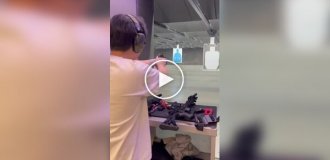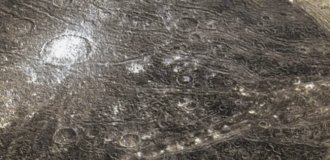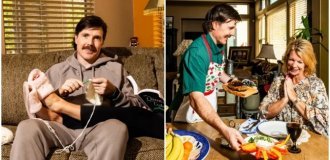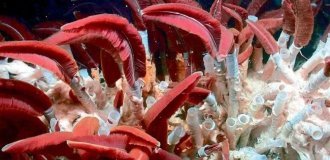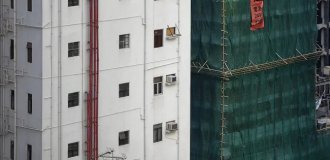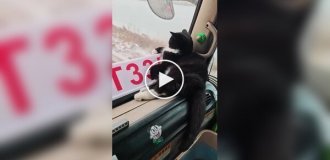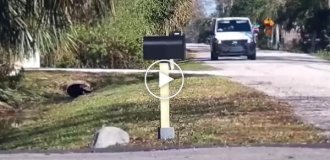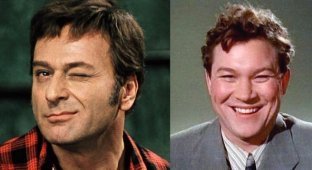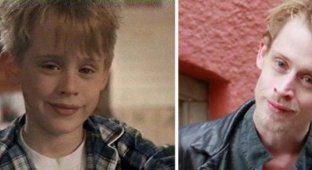A great film of all times, brilliant actors, wonderful direction, what do you know about it? I will try to tell you about this wonderful film.

The novel by the honored artist, laureate of the State Prize of the RSFSR Yulian Semenov, exposes the attempts of Nazi leaders to collude with the most aggressive part of the US military-industrial complex during the Second World War. The novel is based on a documentary basis. The main character of the novel is the Dzerzhin internationalist M. M. Isaev (Stirlitz). Agree, if not for the last phrase, you would have great difficulty guessing what work we are talking about. But this is exactly how the annotation to the novel by Yulian Semyonov sounded in the early 70s. The 12-episode “Seventeen Moments of Spring” is one of the first domestic television series. The director was Tatyana Lioznova, whose most famous film at that time was “Three Poplars on Plyushchikha,” starring Vyacheslav Tikhonov, Lev Durov, Leonid Kuravlev, Oleg Tabakov, Leonid Bronevoy, Rostislav Plyatt, Evgeny Evstigneev and many others.

Filming of “17 Moments of Spring” began on April 11, 1971 in Berlin. For two years, the film crew had to travel around the world - in Germany, the Baltic states and Georgia. When the work was nearing completion, it turned out that the release of the film on screens was in big doubt: the money had run out. Due to the abundance of actors, scenery and outfits, the film turned out to be so expensive that there was not enough money for the 12th and final episode.

By the way, not a single suit was released without the approval of consultant Colonel Brown, who once served in intelligence. Everything was specified - from small badges to buttonholes and shoulder straps. The costumes were made by craftsmen from the general's ateliers. When the group arrived in Germany for filming, the Germans dressed the extras so poorly that the director’s mood soured. The costume designer saved the situation. The fact is that she brought sixty boxes of suits from the Union. Only for Vyacheslav Tikhonov they prepared a hundred shirts - there was nowhere to wash them, and besides, there was no costume designer, who, due to savings, was not included in the group. As a result, the next day the extras were dressed in such a way that the Germans were simply shocked. The series was shown almost immediately after editing was completed. Soviet viewers saw the first episode on August 11, 1973 at 19.30 on the first CT channel. The success was stunning.

Interesting fact from "17 Moments of Spring". Remember the characteristic head movement and neck twitching of Muller-Bronevy? Lioznova was delighted with Bronevoy’s ability to emphasize the irritated state of the Gestapo chief with one gesture. But in fact, it was just that the collar of the shirt in one of the scenes turned out to be narrow for the actor, he didn’t like it, and he twitched. But we decided to leave all this behind and came up with this tic for Muller.

KGB Chairman Yuri Andropov asked to change two details in the film: to remove the names of real consultants from Lubyanka from the credits, since these were active intelligence officers, and to add an episode about the German labor movement. They say that the role of the German proletariat is poorly reflected in the series. The first wish was fulfilled easily, but I had to rack my brains over the second. Fortunately, Tatyana Lioznova remembered that she had chronicle footage of Ernst Thälmann. As a result, this scene was cleverly integrated into the finished episode. In general, the whole picture produces the illusion of documentary. To create it, Lioznova had to watch tens of kilometers of war newsreels – and ours, German ones. “Sometimes I felt sick from what I saw,” recalls Tatyana Mikhailovna. “I ran out of the hall so as not to faint, but still forced the film crew, including the actors, to go to the archive of film and photo documents!”

There were also funny stories on the site, which eventually became stories. For example, when Stirlitz was arranging various figures from matches or drawing pictures, someone else’s hands appeared in close-up in the frame. The fact is that Vyacheslav Tikhonov has a youthful prank on his left hand - a tattoo “GLORY”. No matter how you make her up, it will still be noticeable. If you look closely, Tikhonov, even in long shots, tries to hide the back of his hand from the viewer. So Stirlitz’s hands actually belong to the artist’s assistant Felix Rostotsky. In addition, he wrote a telegram for Evgeny Evstigneev, who simply had bad handwriting.

For some time, Fidel Castro wondered why several key ministers were missing from every evening meeting of the Cuban government. Finally, they whispered to Fidel that responsible comrades were running home to watch on TV a new Soviet film about intelligence officers, “17 Moments of Spring.” Castro acted radically: he demanded that the painting be brought to him and arranged a viewing for members of the government. All remaining twelve episodes at once! Oleg Strizhenov and Archil Gomiashvili auditioned for the main role. The candidacy of the latter, who had just become famous throughout the country as Ostap Bender in Leonid Gaidai’s film “12 Chairs,” was personally defended by the author of the novel, Yulian Semyonov. But in the end, Stirlitz was played by Vyacheslav Tikhonov. For a long time they could not find an actor to play Hitler. Even Leonid Kuravlev tried out. It turned out unconvincing. In the end, Adolf Hitler was played by a German actor, and Kuravlev got the role of the one-eyed SS man Eisman.

The main competitor of Ekaterina Gradova, who played the Russian radio operator Kat, was Constance from “The Three Musketeers” Irina Alferova. Svetlana Svetlichnaya auditioned for the role of Stirlitz's wife, who was later approved for the role of Gabi, who is in love with the main character. Well, the wife of the Soviet intelligence officer was destined to become the actress of the Vakhtangov Theater Eleonora Shashkova, who was brought to the set the day before filming. There was no scene of a date in a cafe in the novel. Tikhonov suggested inserting it after communicating with one of the intelligence officers. It turns out that many of our residents had such non-contact meetings with their relatives. By the way, at first the director was going to show not only Stirlitz’s wife, who came to the meeting, but also his little son, whom the intelligence officer allegedly had not yet seen. But after the screen tests, Tatyana Lioznova realized that the child would distract attention, and abandoned this idea. And radio operator Kat's child was played by six babies at once - the filming took a long time, and the children grew. Much of “17 Moments of Spring” was based on improvisation. For example, the dog (whose “Whose are you, you fool?”) actually ended up in the frame by accident. Stirlitz drove his Mercedes-Benz into the courtyard of the cottage, and then this dog suddenly appeared, whom the owner let off the leash. He simply came up and put his muzzle in Tikhonov’s hands. The camera continued to work, Tikhonov continued to play, improvising, while the film crew, along with the owner of the mongrel, could hardly hold back tears. A special theme is the musical design of the film. Mikael Tariverdiev wrote 18 melodies for the film, but only two were included in the film. True, immediately after the release of the film there was talk that the melody “Don’t think down on the seconds” is very similar to “Love Story” by Michel Legrand. Lioznova tried to protect Tariverdiev. Maybe because she herself insisted that he write the music for “Moments.” Tariverdiev was then very popular and in demand, and she had to persuade him. The composer refused, citing a very peculiar argument: they say that he does not write for films in which Stalin is filmed. In the end, we finally agreed...
There was a whole epic with the singers. We listened to all the best singers of the Soviet Union, including Leshchenko, Obodzinsky, Magomayev, and thought about Tolkunova. As a result, we settled on the candidacy of Joseph Kobzon. But Tariverdiev was categorically against it: they had quarreled over something the day before. So when Kobzon was recording, the director had to place cordons on the staircases, which notified her of the composer’s approach! By the way, one of the legends that once hovered around the film said that Kobzon’s candidacy was “cut down” from above, which is why he was not included in the credits of the film. In reality, everything was much more prosaic. When the credits were ordered, the name of the singer was not yet known. In general, we can talk about “17 Moments of Spring” endlessly. Finally, two interesting facts - at the very end, Stirlitz sits down to rest before returning to Berlin. And a Zhiguli and a ZIL with a trailer drive past him. Apparently, victory is very close. About “true Aryans” and “Nordic characters” - this is the invention of the screenwriter. This was not the case in the real personal files of SS officers. WHERE “17 Moments” WAS FILMS Filming of the film “Seventeen Moments of Spring” took place in different parts of the USSR and abroad. Undestroyed Berlin was filmed in the capital of the GDR, more precisely in its eastern sector. Pastor Schlag crossed the Swiss border on filming in Georgia. The appearance of the Soviet intelligence officer in Bern on Flower Street was “failed” in Riga, where it is still shown as one of the most remarkable places in the capital of Latvia. The Zoological Museum (museum of nature), where Stirlitz was waiting for Bormann, was filmed in Leningrad .The murder of the scoundrel Klaus (then actor Lev Durov, who was not allowed to travel abroad) took place in a forest near Moscow. A few hours before the failure, Professor Pleischner begins to walk in Maines (correctly: Meissen) in Germany, then looks at the bear cubs in the Tbilisi Zoo, reaches Blumenstrasse and throws himself out of the window in Riga.

And all this is not hidden from the viewer. After all, the main thing is not the unity of the place. Soviet filmmakers successfully made films about Western Europe on Riga’s Jauniela Street. On its even side, Igor Maslennikov filmed Baker Street. Tatyana Lioznova passed off the odd side as Bern’s Flower Street in the film “Seventeen Moments of Spring.” This scene was not filmed in Riga at all, but in the city of Meissen, near Dresden, in the then GDR. This is clearly stated in Leonid Parfenov’s film “Seventeen Moments of Spring. 25 years later.” Here is the original shot:

And here’s what this famous place looked like in 1998 during the filming of the film about the film (on the left is director Tatyana Lioznova, on the right is Leonid Parfenov himself, depicting Pleischner’s gait):

Filmmakers have to pass off some cities and countries as others for various reasons. It turns out to be a deception for the benefit of the viewer. Without geographical falsification, shooting a spectacular film can be an impossible task. Often directors cannot find places to shoot a film (as they say in film production - on location) where it is provided for by the film script. A dull landscape or changes in architecture force the director to shoot the views needed for the film in another place. During the filming of the film, a rare phenomenon occurred in the world of cinema - the real Charite clinic in Berlin acted as the Charité university clinic. See for yourself - a still from the film:

This is the same place in present-day Berlin. The tall tree in front of the building is no longer there, and the paths have been redone:

The Charite Clinic was founded in 1710 and is one of the oldest traditional medical institutions in Germany. At the same time, it is one of the oldest university hospitals in Europe.

Schirlitz and Kat leave the clinic:

Let's take a piece of the photograph shown above and superimpose it onto a still from the film - it was undoubtedly filmed in Berlin. The door is not exactly the same, but from the same Charité complex!

The design details and proportions are the same. Look: the same base, the same profiles on the side, the same curves above the decorative grille, the same panels - a rectangle and almost a square. The gates of the Charité clinic in the film:

And here they are in the modern photo - as you can see, visually they have hardly changed (it is clear that they were replaced with newer ones, but maintaining the old style), and the lamps on the poles are different:

This is what the clinic might have looked like during the war, under Stirlitz:

Here Stirlitz passes by a wall, which in the summer should be covered entirely with green leaves:

Although even now climbing plants are not uncommon here:


Church of Pastor SchlagBut we will continue to study the places of military glory of Standartenführer von Stirlitz in Riga. One of these places was the Church of Pastor Schlag, in fact, the Lutheran Church of the Cross, an architectural monument of national importance, in Riga, st. Ropazu iela 120. In the film, the pastor leaves the church to make sure that no one is looking for Klaus:

Judging by the architecture of the portal, this should be the entrance to the Church of the Cross in Riga. But which of several? The most interesting thing is that the entrance we need is located next to the main one (in the photo on the right) and it is surprising that the pastor chose to view the surroundings of only Krustabaznicas Street, while from the main entrance he would have been able to see the entire intersection of the mentioned street with st. Ropazhu and the street itself. Ropazhu (during filming - Gagarin St.):

Let's look at other possible places for Agent Klaus to escape, if they were needed. On the other side of the church there is a slightly similar entrance:

However, the intrigue is that the interior of Pastor Schlag’s church, familiar to us from the film, was not filmed here. And where? Where Pastor Schlag repaired the organ and conducted services In the Riga Church of St. Paul

This is what the interior of Pastor Schlag's church looks like in the film:

And here's what he's like in life:


Remember in the movie Pastor Schlag repaired the organ?

This is its current general appearance:

Having put the organ in order, Pastor Schlag descends the stairs: Let's follow him!

This staircase today:

The pastor walks under the balcony with the organ:

The same view today:

Goes to the exit on the side of the altar:

The same output today:

By the way, the question arises: why didn’t the filming take place inside the Church of the Cross, but here? In the Church of the Cross, the interior is still rather poor. This, by the way, is very typical for local Lutheran churches - a minimum of furnishings, more divine purity. And there are details that betray the recent origin of the Church of the Cross, such as: gently sloping vaults, unconventional shape of the side windows, with the absence of Gothic elements in the windows, wooden balconies and the pulpit do not look ancient, centuries-old. Pastor Schlag, with his connections, could hardly serve in a very shabby church. Therefore, an appropriate interior was needed, strict in Lutheran style, but quite luxurious, with elements of medieval architecture. So, the ideal option was chosen from Riga churches, observing a sense of proportion, because the rest is either more luxurious (which is no longer suitable for the village) , or poorer.
